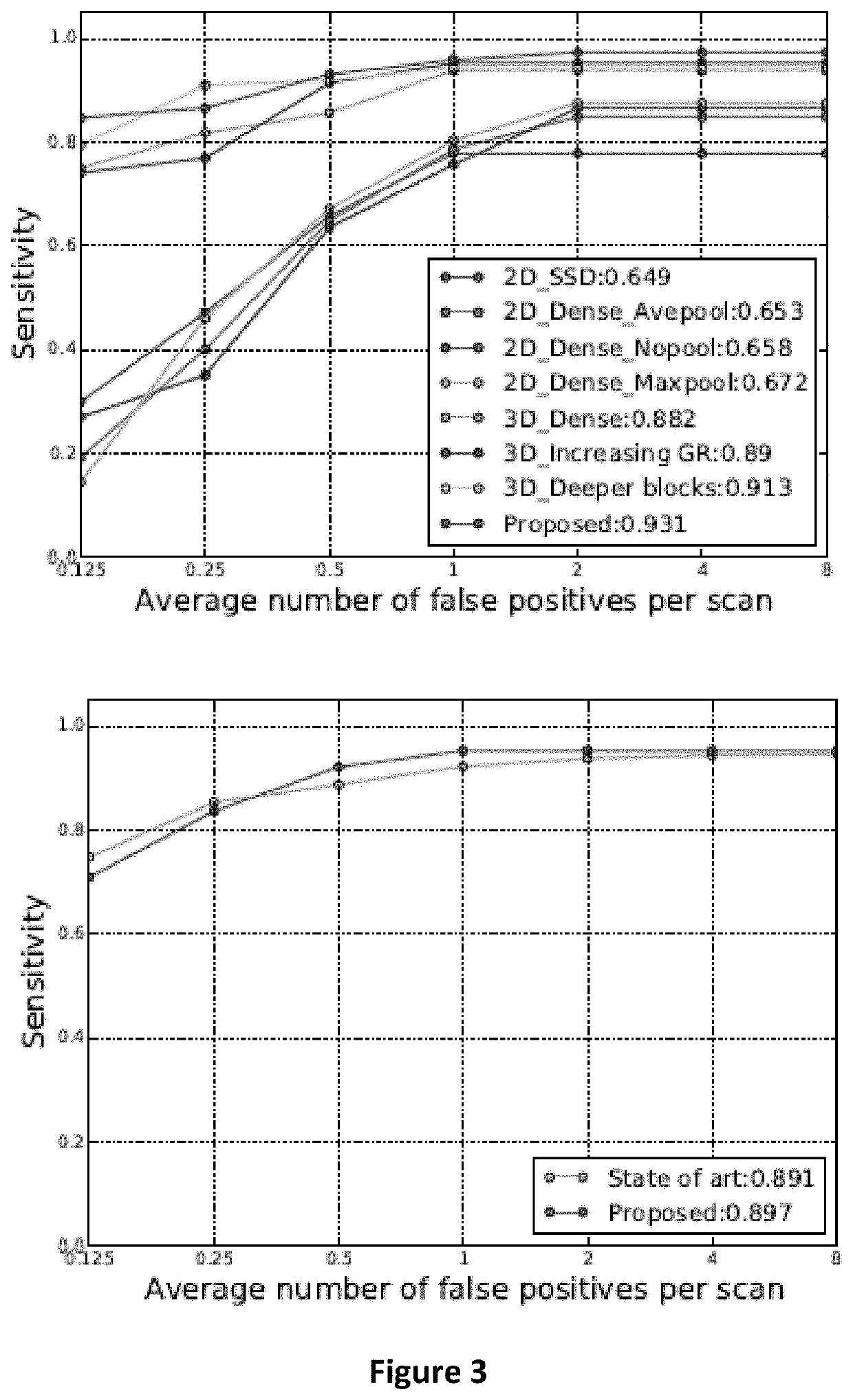Method for detection and diagnosis of lung and pancreatic cancers from imaging scans
a technology of imaging scans and lung cancer, applied in the field of methods of detecting and diagnosing cancer, can solve the problems of computationally expensive multi-stage frameworks, and achieve the effects of improving the risk stratification of cancer tumors in radiology images, improving performance, and improving performan
- Summary
- Abstract
- Description
- Claims
- Application Information
AI Technical Summary
Benefits of technology
Problems solved by technology
Method used
Image
Examples
example 1
Nodule Detection in a Single Shot
[0093]Current lung nodule detection studies rely on computationally expensive multi-stage frameworks to detect nodules from CT scans. To address this computational challenge and provide better performance, the inventors have developed a new deep learning-based method for lung nodule detection termed S4ND. The approach uses a single feed forward pass of a single network for detection and provides better performance when compared to the current literature. The whole detection pipeline is designed as a single 3D Convolutional Neural Network (CNN) with dense connections, trained in an end-to-end manner. S4ND does not require any further post-processing or user guidance to refine detection results. The inventors compared the network with the current state of the art object detection network (SSD) in computer vision as well as the state-of-the-art published method for lung nodule detection (3D DCNN). Using publicly available 888 CT scans from the LUNA chal...
example 2
Tumor Characterization Using Supervised Learning
[0118]Risk stratification (characterization) of tumors from radiology images can be more accurate and faster with computer-aided diagnosis (CAD) tools. Tumor characterization through such tools can also enable non-invasive cancer staging, prognosis, and foster personalized treatment planning as a part of precision medicine. Tumor characterization based on supervised learning demonstrates significant gains with deep learning algorithms, particularly by utilizing a 3D Convolutional Neural Network and Transfer Learning. Motivated by the radiologists' interpretations of the scans, the inventors illustrate how to incorporate task dependent feature representations into a CAD system via a graph-regularized sparse Multi-Task Learning (MTL) framework.
[0119]The inventors have developed a novel supervised learning strategy to perform risk-stratification of lung nodules from low-dose CT scans. For this strategy, a 3D CNN based discriminative featu...
example 3
Tumor Characterization Using Unsupervised Learning
[0151]Since annotating medical images is laborious, expensive and time-consuming, the inventors also developed an unsupervised learning method to classify lung nodules and IPMN by using a novel algorithm to address the limited availability of labeled training data, a common problem in medical imaging applications. Inspired by learning from label proportion (LLP) approaches in computer vision, the inventors used proportion-SVM for characterizing tumors. First, the inventors extracted discriminative information from a large amount of unlabeled imaging data. The inventors analyzed both hand-crafted and deep learning features and assessed how good those features were when applied to tumor characterization. In order to obtain an initial set of labels in an unsupervised fashion, the samples are clustered into different groups in the feature domain. The inventors then trained Proportion-Support Vector Machine (aSVM) algorithm using label pr...
PUM
 Login to View More
Login to View More Abstract
Description
Claims
Application Information
 Login to View More
Login to View More - R&D
- Intellectual Property
- Life Sciences
- Materials
- Tech Scout
- Unparalleled Data Quality
- Higher Quality Content
- 60% Fewer Hallucinations
Browse by: Latest US Patents, China's latest patents, Technical Efficacy Thesaurus, Application Domain, Technology Topic, Popular Technical Reports.
© 2025 PatSnap. All rights reserved.Legal|Privacy policy|Modern Slavery Act Transparency Statement|Sitemap|About US| Contact US: help@patsnap.com



